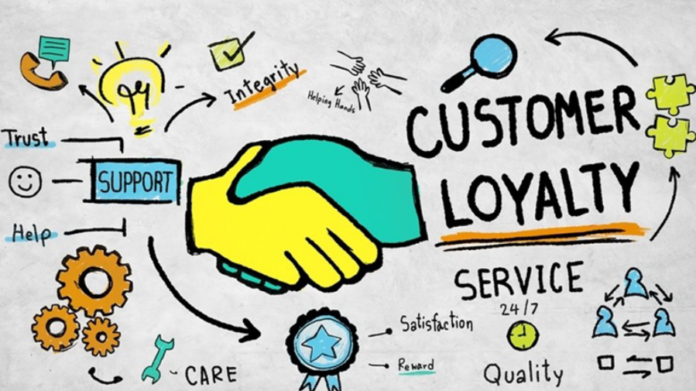Experts say it is better to maintain an old customer than to make a new one, which is valid for every kind of business. And this is not just a saying because even the stats show that, it is at least six times more expensive to earn a new customer as compared to keeping the old one. So no matter how much effort businesses put in their sales strategies, if they are not taking care of their exciting customers, they are at a significant risk of failing. That brings us to our primary discussion topic, Customer Loyalty Programs. This article includes all the information about these programs that will help a beginner to get started.
Table of Contents
Customer Loyalty Program – Meaning
In layman terms, a customer loyalty program can be considered as a relationship that the brand maintains with its customers. These programs help the business in managing their customers for the long term. They may offer exclusive promotions, products, or pricing to their customers so that they keep engaged with the brand.
Many people misunderstand this concept as providing discounts, and that is where they fail. It happens because usually transaction-based programs attract cheapskates, and they leave the brand as soon as they stop getting these benefits. So instead of these types of offers, businesses should focus more on attracting those customers who would be interested in running for a long time with them.
Now the question arises, how can businesses find only the correct audience? Well, if they incorporate the correct customer loyalty programs in their strategies, the right patrons will automatically be attracted.
Customer Loyalty Program – Types

There are various types of customer loyalty programs that have been already proven effective. So brands can incorporate them into their marketing strategies and keep hold of their customers. Here are the most effective programs that work well for almost all businesses.
Spend Programs
In these programs, brands offer loyalty credits to their customers whenever they make a transaction with them. Many marketers think that there is no difference between these programs and discounts, as they both provide a lesser price to the customer. However, that is not the case. The result of discounts is generally short-term customers. On the other hand, spend programs attract more loyal customers.
Punch Programs
Almost everyone has been offered a free membership card from at least one of the brands that they follow. These cards are a great example of punch programs. Every time they shop with the brand, they earn some punches on their card. And after a certain amount of punches, the customer receives some kind of benefit from the brand.
Tiered Programs
Under these programs, brans offer different benefits on different amounts of transaction. For example, if a customer spends X amount on the brand, they get 20% off, and if they spend 2X amount, they get 30% off. This customer loyalty program is the most popular one because it targets different sets of audiences.
Points Programs
Unlike other loyalty programs, this one is not transaction-based. In this, brands offer points to the customers whenever they interact with the brand. That interaction can either be a payment, a social engagement, or any other customer action. These points can be redeemed to get benefits from the brand. They are the most beneficial programs to maintain customers.
Paid Programs
These programs are the best to keep the customer attached to the brand for at least some time. Under these, brands offer membership to their customers. The ones who pay for that membership, obtain several exclusive benefits from the brand. They might attract a limited set of audiences, but they definitely increase the transaction values of customers.
Customer Loyalty Program – Tips and Tricks

Finally moving on to the actual process, building a customer loyalty program. The programs that are mentioned above are general programs. Brands need to customize a loyalty program that will fit best in their domain and business. Here are some tips and tricks they can follow to prepare the best customer loyalty strategy.
Reward Beyond Purchases
Brands think that rewards should only be incorporated with the purchases so that they attain the most benefit while providing one to the customers. However, that is not the case in customer loyalty programs. They should reward their customers for every interaction they perform with the brand. For example, a brand can offer its customers a small number of reward points, every time they watch a video of the brand. It shows the customers that the brand is not just interested in their money.
Non-Monetary Value Benefits
Values work more than monetary benefits while dealing with customers, as they trust the brands that stand for social/political causes. For example, a brand can donate a specific portion of every customer transaction. This way, the customers know that a part of their money is going for a good cause, which makes them loyal towards the brand.
Gamify The Strategy
Almost all customers love to earn rewards through games, which gives an opportunity to the brands to incorporate their customer loyalty programs into games. They can hold competitions and reward the winners. Regular games/contests help the brand in maintaining a relationship with its customers.
Get A Good Name
Another aspect of customer loyalty programs is the name of it, which is the first thing that people encounter. The name of the program should be kept precise, exciting, and less revealing. It should give an idea to the customers about the program, but should not tell anything in-depth. So that they will have to interact with the brand in some way to gain more information on the brand.
Make The Program Worth
Customer loyalty programs invest the customer with the brand in some way or the other. So brands need to make sure their investment is worthy. Only then they will be able to keep the customers for an extended period. For example, if the customer is investing their money in the brand, it should make sure that the customer gets enough rewards for the amount of investment that it seems worthy to them.
Conclusion
Dealing with customers can be the most challenging task in any business, but it is the most crucial one too. As people say, “a bird in the hand is worth two in the bush.” So, brands should focus more on maintaining its loyal customers than finding new ones. And that can be conveniently done with a correct customer loyalty program.












